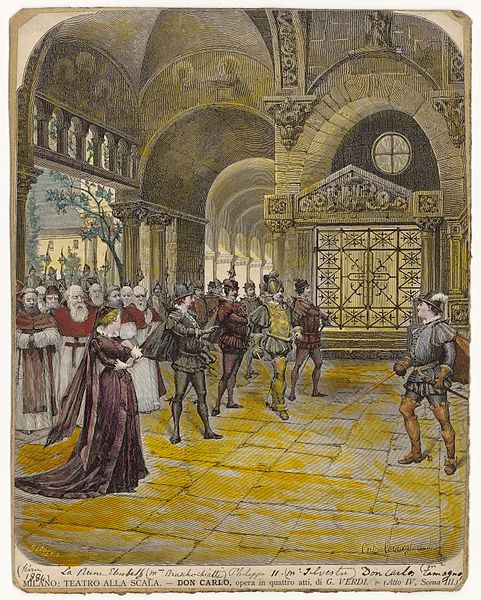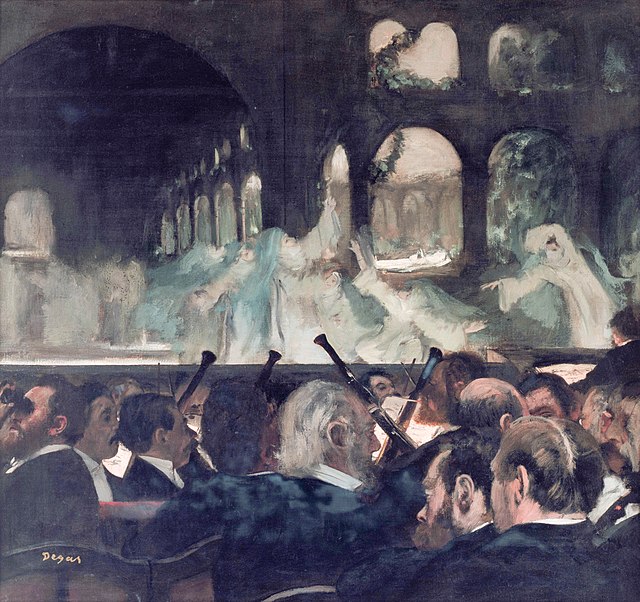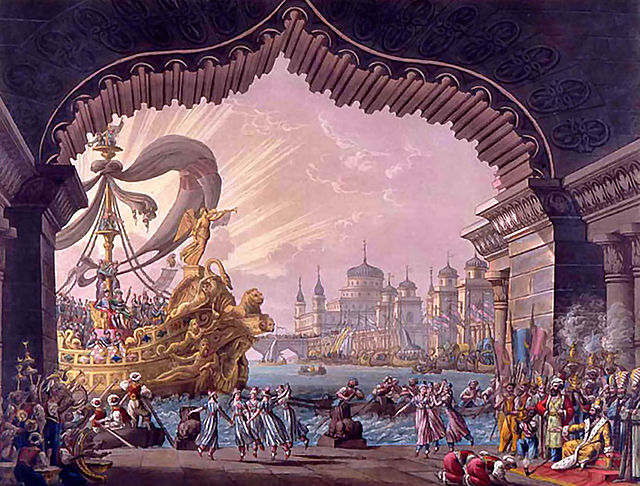Don Carlos is an 1867 five-act grand opera composed by Giuseppe Verdi to a French-language libretto by Joseph Méry and Camille du Locle, based on the dramatic play Don Karlos, Infant von Spanien by Friedrich Schiller. In addition, several incidents, of which the Forest of Fontainebleau scene and auto-da-fé were the most substantial, were borrowed from Eugène Cormon's 1846 play Philippe II, Roi d'Espagne. The opera is most often performed in Italian translation, usually under the title Don Carlo.
Carlo Cornaglia's depiction of Act IV (the original Act V) in the 1884 La Scala production
Giuseppe Verdi, about 1870
Marie Sasse as Elisabeth
Costume design for Charles V, act 5
Grand opera is a genre of 19th-century opera generally in four or five acts, characterized by large-scale casts and orchestras. The original productions consisted of spectacular design and stage effects with plots normally based on or around dramatic historic events. The term is particularly applied to certain productions of the Paris Opéra from the late 1820s to around 1860; 'grand opéra' has sometimes been used to denote the Paris Opéra itself.
Degas (1871): Ballet of the Nuns from Meyerbeer's Robert le diable (1831); one of the earliest sensations of grand opera
Set design by Francesco Bagnara for act 1 of Il crociato in Egitto by Meyerbeer
Meyerbeer Le Prophète set design for the final conflagration by Philippe Chaperon
Le Cid, Massanet, ballet at Le Cid's camp. Set by Rubé, Chaperon and Jambon.







